You become what you think about most.
Earl Nightingale
Our Thoughts have Power.
I want to think that I am not gullible or naive – we all hope for that, I suppose. And in the same breath – I am moved quickly. I don’t believe that to be a bad thing.
If you have read almost any of my blog articles or social media posts, you know that I have already admitted to having a “superpower” of crying easily. This superpower can be triggered by any Disney movie, Folgers commercials, and the like.
You probably also understand that I place a great deal of value on the Power of Music and Prayer. These essential tools help to navigate us on our journies of finding inner peace. And this is all true because our thoughts have power – our subconscious mind can help or hurt us. Oh, but let’s not jump too far ahead of us.
Let me back up for a moment.
I quote Deepak Chopra often. And with all of my studies that I have completed over the years, I have become a firm believer that we have the ability to rewire our brains for positive thinking.
When I was asked by PR by the book, to read the book “Make your own Damn Cheese” and interview Dr. Chuback. I provided a quick “yes” after reading his bio and the book’s summary.
So, without further delay, let’s jump right in!
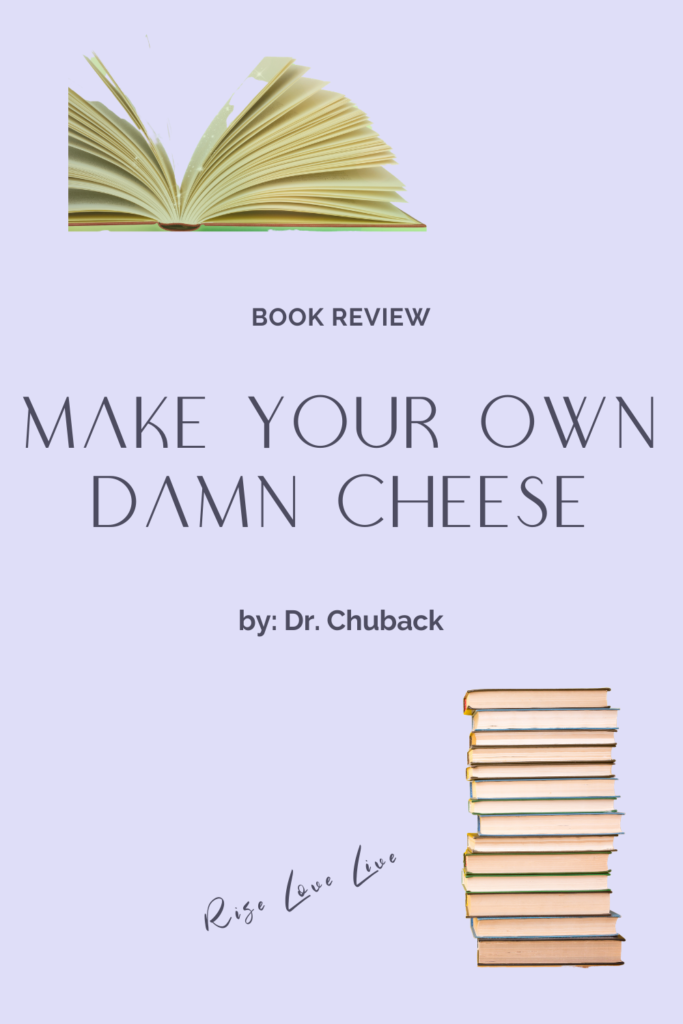
An interview with Dr. Chuback, author of “Make your own Damn Cheese.”
… the Power of our Minds
Before we get into the specific questions I have about the book, can you please tell our readers a little about you and why you became a writer?
I was always a bit of a writer by nature. It came easily to me going back to my high school and college days. I was proficient at writing, had a great interest in literature, and really enjoyed creative writing.
But of course, my formal education was in science and medicine. I went through many years of rigorous medical & training. That was quite an experience, a very trying period. Digging down deep into who you are, what you are made of, and what your limits are. How far you can push yourself, what you are capable of, is really a marvelous journey. Still, it’s also a difficult one – emotionally, psychologically, intellectually – a challenging path to undertake.
So by the end of that journey – I really thought I had been through something – a personal experience and personal growth. And I wrote my first book – “Kaboing!: 50 Ideas That Will Springboard You to Academic Greatness”.
Over the following 15 years or so – I became quite intensely involved in personal development. Of being the best you can be, and why some folks are more successful than others, and so forth. I did a lot of reading and personal research in that field. During that process, I felt I had something to contribute to that space.
I felt that my experience (in personal development) was vast enough to add to the story already out there.
That’s why I decided to write this book. It is a culmination of many of the teachers and mentors that I’ve had over the years. I put their material together and then added my own philosophy. Which came together quite nicely when I wrote this book, “Make your own Damn Cheese.”
Author Influencers
What other authors are you friends with, and how do they help you become a better writer?
I think it’s probably like most things. We tend to read what we enjoy reading, and the writer’s voice and style resonate with us. Then, organically your own writing style might reflect those same styles. And then not so organically, but intentionally – you “pay homage” to those people by mimicking their writing style.
That’s what happened when I wrote: “Make your own Damn Cheese.” The format and concept of the book is this allegory about mice living in a maze. I really took that from Spencer Johnson, who also happened to be a physician, and wrote the original version of “Who Moved my Cheese.”
I loved that book. That book came to me during a critical time in my life. I was switching career paths from hospital-based open heart surgery to office-based vein and laser surgery. And I just loved how simplistic the book appeared, but how important and valuable the messaging is.
I also gravitated to numerous writers and speakers. You can call them motivational educators and self-help people: Jim Rohn, Denis Waitley, Price Pritchett, and Brian Tracy. They all speak in very plain English, and that is something I am accustomed to. I consider myself a very highly educated person, but I still like communicating straightforwardly.
I appreciate the common sense and “common person” language used for a very sophisticated and valuable idea. So I intended to write in that style, accessible to just about anybody and at any age level.
Another Influence
I’m familiar with the first book that Earl reads (“Who moved my cheese?”), but what is the second book? The one that tells Earl he can be “a mouse like no other” and the maze that he needs to escape is “actually inside of his mind”?
“I Moved Your Cheese: For Those Who Refuse to Live as Mice in Someone Else’s Maze.” by Deepak Malhotra. Malhotra teaches at the business school at Harvard University.
The idea in the first book (“Who Moved my Cheese“) is that we live in a dynamic world where things are constantly changing (like the times we are in now). When things change, you need to be prepared to move in a new direction. Pivot, be adventurous and be courageous. Be ready to move and reinvent yourself.
That is precisely what happened when I was leaving cardiac surgery. I had spent years training for this my whole life, literally. I had been dreaming and thinking of becoming a surgeon since I was a little boy. My father was a physician, so he encouraged me to pursue this amazing field!
But by the time I got there, once I began my practice, everything had changed dramatically. There were even newer treatments. I was so busy with long hours, dealing with reimbursement factors, etc. – someone had definitely “moved my cheese.”
That book was essential for me to say that the cheese is no longer in the corner of the maze that I lived in. I have to go out into the maze and look for other sources of cheese.
Professor Johnson said, “We are like mice living in a maze, and the maze is the real world where we interact. We live inside of that.”
Malhotra brings forth in his book, which I recommend, the outsiders manipulate the maze and move the cheese. They are in control of the cheese, and it’s your responsibility to find that cheese.
Most importantly, the key factor in understanding is that the mouse is not IN the maze, but the maze is IN the mouse. This goes to our idea of self-concepts, the paradigm, and who we see ourselves as, and where we see ourselves fitting in the world.
That brings us to many of the great quotes we see – “It’s not what we think we can do that is important; it’s what we think we can’t do.” Or, “It’s not who we think we are; it’s who we think we aren’t, that limits us.”
What I’m saying, there’s a maze inside of us, and that maze essentially directs us and decides what we believe and what we are capable of, what we can achieve, etc.
There are two concepts: a mouse moving within a maze and a maze living within the mouse. I took those two ideas and put them together. And in my book, I talk about the third maze. This is the maze of freedom and happiness that lives on the other side of the “terror barrier.”
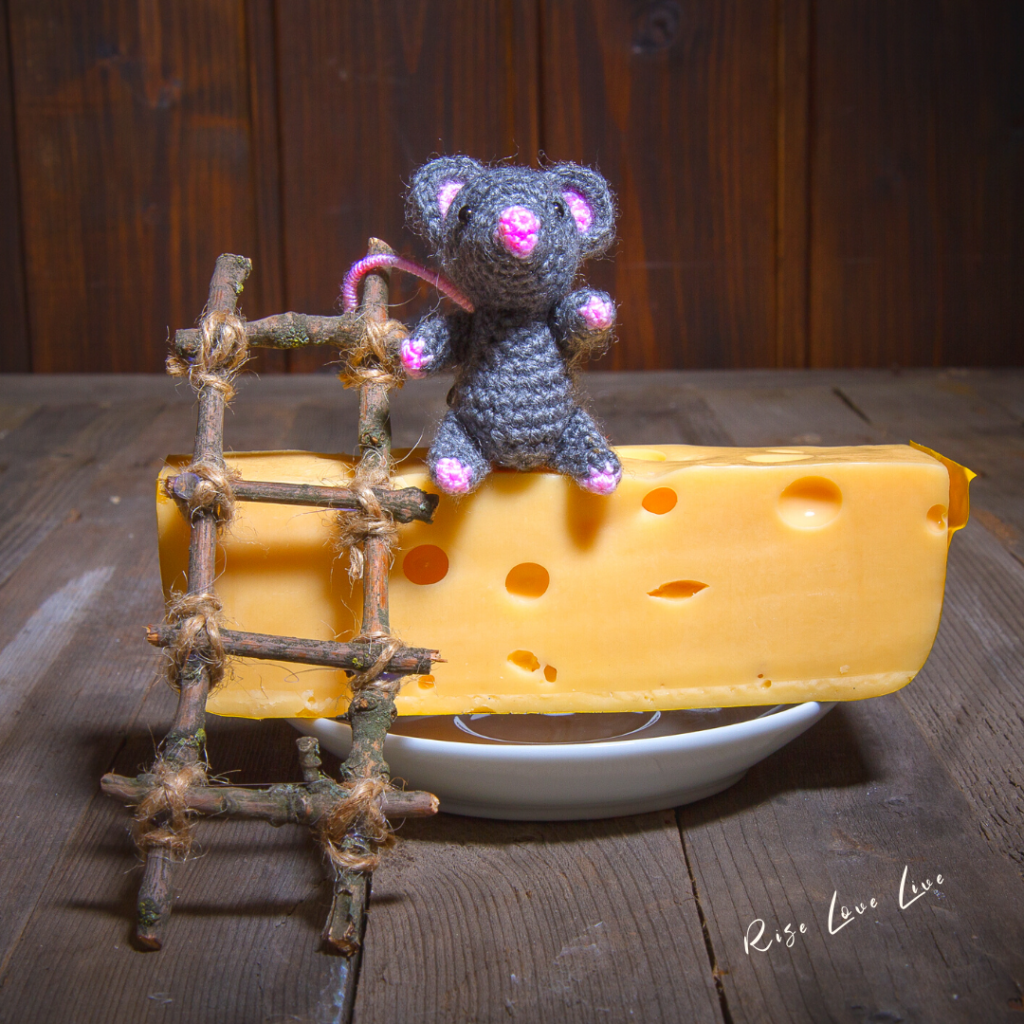
What’s the Difference?
What is the big difference between your “cheese” book and the other two books that Earl reads? Without giving away the ending, of course!
My book is both a response and a homage to both books. They are both extremely valuable and were vital to me during various stages in my life.
But it seemed to me that one person was saying one thing and the other something else, and in some ways (not entirely but in some ways) was contradictory.
I felt that the truth actually lies somewhere in both of them. It was a matter of how we looked at things. We are mice that live in a maze. We are given rules and regulations of society to function within. Some people will move our cheese. And there are physical barriers that we must come against.
However, it is also essential to understand who we are. What makes us tick, why we think the way we do, and that is the maze that lives within us – the maze I call the paradigm.
It’s important to note that both mazes exist. How to master each maze, and ultimately the essence within my book, how to understand your own mind, how the mind works, and master the mind to create the results in your own life.
You Become what You Think about Most.
I love the phrase “you become what you think about most”! I have actually included this expression in my upcoming book. It was explained to me years ago by the same boss that told me to read, “who moved my cheese?!?”
But, I scratched my head a little when I read –
“If you allow yourself to be filled with negative, self-defeating, fearful thoughts, you will attract failure and disappointment.“
I do realize that both of those concepts tend to go hand in hand.
However, I have many friends and connections who suffer from depression and anxiety; who might take offense to that statement. Some folks may feel that they actually do not have control over their thoughts and emotions.
Can you provide helpful tools, advice, and/or information to help them embrace this way of thinking?
That we do have some control over their thoughts?
Well, you have touched upon a vital subject of anxiety and depression. Unfortunately, it is a prevalent disease in our culture and around the world. There are numerous reasons and causes for the dramatically different levels of anxiety and depression. I certainly do not want to imply that anyone’s fault they are suffering from anxiety or depression.
Obviously, there are professionals in psychology and psychiatry who specialize in helping people manage and overcome those problems. It is absolutely a very important area of psychology.
This book is written in the area of “positive psychology.” It focuses on the potential of the human mind and how it functions. It can be optimized by understanding the mind’s basic structure regarding the conscious, subconscious, and superconscious mind.
We’ve touched on a challenging subject – the mind is different than the brain. The brain is a 3 lb organ. It sits in the skull and is a highly complicated, highly complex switching station to deal with all the body’s functions, including its emotions, senses, etc.
There are chemical disorders, imbalances, etc. That can lead to clinical depression and other conditions and diseases that lie outside this book’s scope.
That being said, aside from medication, psychotherapy, and other forms of medical treatment, I think that it’s essential for each of us to have an understanding of ourselves and our minds.
Each of us should try to control our minds better, manipulate our feelings, and the power of perceptions to a more positive and healthier place.
Even for those suffering from these debilitating disorders – there is still value in a book like this. Start from the beginning and say, “Okay, I have a little bit of understanding how my mind works. And maybe to what has been driving my thinking, my behaviors, my belief system. I can start to reprogram some of that with self-help therapy, reading, and my thinking.”.
That isn’t going to be a quick process and isn’t going to be the “magic solution.” I still believe even for those suffering, there is value in that part of the book.
“My mind is not my brain. My mind is something that I am in possession of.”
The great spiritual teacher Eckhart Tolle.
He teaches that “you are not your mind.”
I went through all of my medical school years, psychiatry classes, inpatient, outpatient, etc. I don’t think anybody explained that to me. That “the brain is different from your mind, and you are not your mind.”
Your brain is an organ, and your mind is more of an activity. And you, my personal belief, are more of a spiritual being behind the mind, in possession of your mind, and control of your mind.
For example, you own your hand, and you can elect to open or close your hand. You can take control and possession of your mind. Begin to develop a greater and greater mastery so that your mind behaves more and more in line with how you would like it to, which is easier said than done.
I believe that this little book may be a starting point to help people see that. Of course, you can go much deeper, but it is a good starting point to gain insight into some of those basic principles.
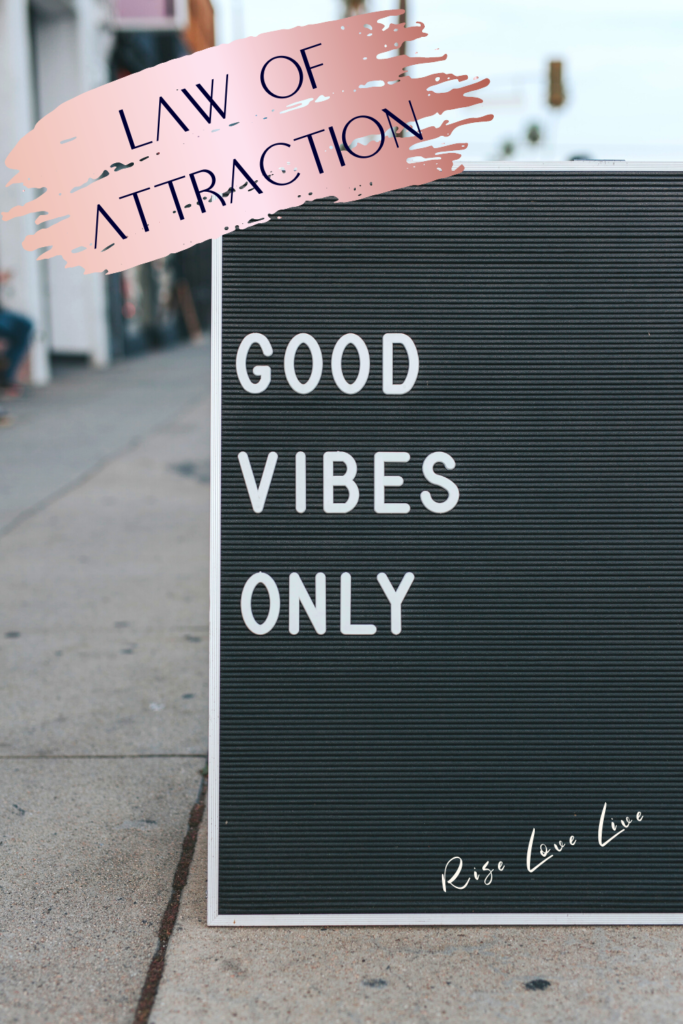
Law of attraction:
You attract the same energy that you transmit. The frequency of (your) energy is dictated by (your) paradigm.
Can you talk about this and dig in a little deeper for our readers?
This particular area of the book – this type of teaching – requires some degree of faith.
It isn’t a hard science and might be the area that we refer more commonly to as “metaphysics.” The part of the world that we can’t really see or define per se, but that doesn’t mean it’s not there or it’s not real.
It’s more philosophical. I can’t prove it to you like the other scientific principles that I understand as a cardiovascular heart surgeon.
That being said, it’s still a valuable tool, and that there (probably) is some basis in science that we just don’t quite understand yet.
One of the areas that I find fascinating in science is something called harmonic resonance. You can find straightforward examples on YouTube that are pretty impressive.
For example, one video has two Grand pianos in a large open room. If you strike the middle c key – that string will vibrate. Walk across the room and listen very carefully. You’ll find that the middle c is playing on the second piano even before the key is touched.
Another example is with a tuning fork. If you have a 440 Hz tuning fork and hit it with a mallet, the second fork (which is tuned to the same frequency) will vibrate in harmony. But if you have other tuning forks in the room, set at different frequencies, they will not vibrate.
The idea – whatever you put out into the universe (good, bad or otherwise) is generally what we are going to attract.
You have the old expression, “birds of a feather flock together.” You’ll find that positive people tend to hang out together, negative people tend to hang out together, and so on.
Some of you may say it is habitual. These are just habits or even preferences. Perhaps, it’s something more, something we still don’t understand. Maybe the frequency we are giving off in our body language, and our general energy attracts “like” things back to ourselves.
On the other hand, there is something called harmonic dissonance, where you get the complete opposite effect.
For example, you might have three or four people having a great conversation, and someone walks into the room. Suddenly it feels as if a “wet blanket” has been thrown over the whole situation. You can feel a “sour note,” and the room is no longer in harmony.
That is the flip side of the “law of attraction.” It’s the “law of repulsion” and is also a fundamental concept.
Our Paradigm.
Bob, another character in the book, touches very lightly on the topic of manifestation with Earl.
“Ultimately, it is your thinking that produces the tangible results you desire in the real world.“
Would you like to explain this a bit more to us?
Yes. This is something I am passionate about, and I believe in, greatly.
From a very pragmatic point of view, if you look at my nuclear family as an example, my father is a physician, and my mother was a nurse. I had three older sisters, and while growing up, my father would repeatedly tell us the same thing. “You can become anything you want in the whole world as long as you become a lawyer, a doctor, or dentist!”
Remarkably, I’m a doctor. I have two sisters who are dentists and one sister who is a lawyer. The two sisters who are dentists are married to dentists. My sister, a lawyer, is married to a doctor, and my wife has a Ph.D. in neurochemistry.
So, it’s tongue in cheek and slightly humorous in a way. Still, in the other sense (fortunately or unfortunately), he wasn’t joking. And he said it so often and so repeatedly that it affected our thinking.
After a while, not only do you begin to envision yourself as a doctor, but at the age of 5, 6, or 7 years old, I actually saw myself as a cardiovascular surgeon.
That process of conscious thinking, which eventually percolates through what we call the physic bearer, will ultimately take root. Like seeds in the subconscious and turn into what we call the self-concept or the paradigm.
The paradigm then drives the body, which is the instrument of the mind, to behave in such a way so that you achieve specific results. That process is the process we call the transmutation.
Transmutation is where habitual thinking leads to habitual behavior, leading to results that always reflect our thinking.
This is a very powerful concept, and I greatly believe transmutation can be used both positively and negatively.
Transmutation
Here’s an example, if you grow up in a family of smokers (mother, father, grandparents, etc.), it is highly unusual for that person, as an adult, not to become a smoker. For your entire life, you have seen smoking as a ‘normal’ activity.
Those around you, who you love, smoke and have told you over and over again that smoking is “okay.” So, now you believe that it is okay to smoke. Obviously, there are exceptions to every rule. But generally speaking, it’s very common to see professions follow one generation after another. Attending a particular college one generation after another. For children to have a similar income, the type of neighborhood we live in, etc.
We simply think that [it] is “normal.” We believe this is just the way it is – the way it always has been and true. That’s okay – because it has been this way, essentially, and this is how we have come to believe.
But the question is, “why” and “what causes that to happen”?
The information within my book explains these questions. The conscious mind and its relationship with the subconscious mind, our behavior, and the superconscious mind. What we are attracting and what we are achieving.
Now, the book’s point is not to prove that if your father is a doctor, you will become a doctor. The point is to help you overcome that. Suppose your father is a doctor and you want to become an architect. In that case, this book allows you to obtain that goal and say to yourself and others – “Hey! I can be a successful architect, author, musician, etc.!”.
I can choose to go my own way in the maze and still be okay and still be successful! But now I know why I have been thinking the way I had been thinking, and I know why I’m in a negative vibration with these thoughts because what I really want to do is “y” and not “x.”
Again, it allows us to control our lives, take control of our minds and take control of our results.
The Terror Barrier
What exactly is the “terror barrier”?
“Terror Barrier” is the barrier that we all come up against when trying to make a change in our lives. When we introduce a new idea into the subconscious mind – it puts us in a negative state. Into a negative vibration, and the body interprets that “negative vibration” as a “state of dis-ease.”
The body is the instrument of the mind. Our mind goes into a “negative vibration” when introduced to a new or foreign concept. We begin to feel unwell. You might get butterflies in your stomach, palpitations in your heart, a tension headache, nausea, etc.
Like the very successful cardiac surgeon. Who wants to tell everyone that “I’m going in a new direction. I’m leaving the hospital and going to practice in an office and practice minimally invasive surgery.” The whole world that he lives in turns upside down!
Everyone questions your decision so much so that you begin questioning your decision. It’s terrifying. When you get to that point, you often turn back because it’s easier to stay where you are. You talk yourself back into thinking this “isn’t so bad,” and you decide not to make any changes. Why rock the boat?! Everything is fine the way it is.
I like to relate this to the “crab mentality.” When crabbers catch crabs, they place them in a large bucket with seawater but no top. That’s because as crabs attempt to climb to the top and try to escape, the other crabs grab their legs and pull them back in.
Well, that’s what happened in our bucket. My father said: “you must be a doctor, dentist, or a lawyer”; that’s what he got, and they also married in the same industry.
Now, this isn’t a lousy bucket to live in. But what if one of the crabs wanted to be a composer or a politician? There wasn’t any room in our bucket for new ideas.
The “terror barrier” is what we have to crash through, alone, and say, “I don’t really care how anyone else thinks about what I’m doing!” And, more importantly, I have to dismiss even how I’m feeling in my gut. Ignore the negative vibration. Disregard the fear that I am experiencing. I have to trust myself, my heart, my emotional mind, and my subconscious mind that this new idea is the way I really want to go.
Once you crash through the idea and crash through the “terror barrier,” this is what we call the happiness maze and where the world of “Blue Sky Thinking” really exists.
Blue Sky Thinking
What is Blue Sky Thinking?
“Blue Sky Thinking” is a philosophy that most of us are not taught. “Blue Sky Thinking” is as if everything were perfect. Perfect in every way of our life (e.g., I did what I wanted, I had the salary I wanted, I vacationed where I wanted, etc.) – how would my world work, and what would it look like?
Unfortunately, we are often raised with the opposite mentality and philosophy. This philosophy tells us to be safe and smart. Similar to what we see right now. Everyone thinks about “What is the worst thing that could happen?” – what if this …. what if that … what if? Most of us live in “gray sky thinking.” This is our normal mode – it’s a risk reduction, disaster prevention mode.
Most of us live in “gray sky thinking.” This is our normal mode – it’s a risk reduction, disaster prevention mode.
When are people asked to dream, just for a minute, just as a game – how much do you really want to make? Where do you want to live? What job do you want? What if you could have anything that you really wanted?
People get very anxious. And when they attempt to begin thinking like that, their reaction is to say, “That’s not important. It’s too superficial. There are more important things to think about.”
However, it’s just an exercise, “If my life were perfect in every way – how would it look?” That is the new way of thinking, that is “Blue Sky Thinking.”
When most people engage in this type of thinking, they immediately come across the “terror barrier.” I can’t do “x” because of the “y” excuse – there is always going to be an answer to “why” I can’t do something.
It’s a fascinating exercise to watch people engage in this type of thinking. How uncomfortable it makes most as if they have done something terrible. It’s just a game, it’s just an exercise, but we’ve been taught to take your fair share – leave enough for others.
Generally speaking, we have been taught that there is a limited supply. The source is limited, and you should never take more than your share.
There is a beautiful saying, “He took from abundance, abundance, but abundance remained.” Meaning the source is infinite – you can never take more than your fair share. As long as you’re honest, ethical, and moral about it – there will always be enough for all.
The universe is abundant; it’s not limited. It’s plentiful, and you can ask for anything that you want.
How do we put this plan into motion?
And finally, What now?
What are the next steps for us to take to put these ideas, this plan into motion?
It begins by reading my book, quite frankly. Understanding what I have to say and thinking about it. Then, look at yourself and say – “what areas of my life…” – you see, life is broken up into areas – “…can be changed?”.
Now, before you say that everything is perfect, let’s look at what could be changed:
- Your Weight
- Blood Pressure
- Cholesterol
- Fitness level – could you jog a mile?
- Your income
- Your profession
- Your relationships – kids …. etc
There are thousands of facets of our lives – “How much money do I give away to charity?” “How much volunteer work do I do?” Why or Why not?
There are a thousand facets of our lives that we can look at, as we are not uni-dimensional. We are so multifaceted it’s remarkable. So you might look at certain areas of your life; you might even look at many and say:
- My wife (husband) is perfect – check – I don’t need to work on that
- I love my car – check
- I love my job – check
- But I’m 25 lbs overweight – that I might not love and
- My doctor mentioned at my last physical that my cholesterol is a bit high
- I also get slight shortness of breath when I walk up a flight of stairs.
You could say that these three areas aren’t exactly “blue sky” in my life.
How did this happen?
One could guess that these things seem to be related to Sunday family dinners – with the stuffed shells, baked zit, meatballs, bread, cannolis, and the wine!
But why do we even do that? Why do we have these dinners?
Because growing up, I was exposed to that experience. My five senses (sight, sound, smell, taste, and touch) with my whole family – that was how we showed love, that was my culture, that was our thing.
So now I know the “why” as to the way we “behave” on Sundays. I also know “why” I’m looking at a colander full of 2 lbs of spaghetti, and I’m expecting 10 people to walk in my front door any moment!
It’s a beautiful way of living – except – I’m 25 lbs overweight, my cholesterol is a bit high, and I get short of breath when I walk up a flight of stairs.
If I want to change, then I have to change the way I think about Sunday afternoons. I have to change the way I believe how Sunday afternoons should look like. I don’t need to have 30 people in my house for me to love them or for them to love me.
That’s the point – look at your life carefully and decide what areas you are happy about vs. not and where you could use some improvement or get better at!
Then, use the ideas from the book to hopefully change your thinking in those areas. Change your beliefs, which will then, in turn, change your behaviors and ultimately change your results.
I believe this works!
If we go back to your example of a clinically depressed person – someone could be really depressed because they don’t know who they can talk to. They don’t know what to do. They are afraid to admit they have an issue or don’t know where to find help.
With this practice, at the very least, they can begin processing their thoughts. “Why have I been thinking like this? Maybe I should change the way I’m thinking? Perhaps I should reach out to a therapist? I should see if there is help available.”
At the very least, it gets you thinking in a new way. I now have some hope, and I have more (or some) control. I can take the reins back and guide my life in the direction that I want to go, versus going along for the ride and simply feeling like you’re being dragged along.
A fabulous book!
I really enjoyed reading Dr. Chuback’s book and meeting him over the phone to conduct this interview. Please share and leave a comment below, and please remember to check out his book as well!.
If we could give just one person a little hope and change their thinking, change their belief, change their behaviors, they change their results!
Heidi – at the closing of the interview
Where else can you find Dr. Chuback?
Facebook, Instagram, and Twitter!
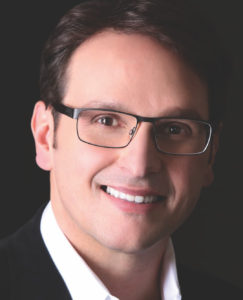
Every time you are tempted to react in the same old way, ask if you want to be a prisoner of the past or a pioneer of the future.
Deepak Chopra
Until next time … Peace and Blessings, Friends!
Rise Love Live is a participant in the Amazon Services LLC Associates Program, an affiliate advertising program designed to provide a means for sites to earn advertising fees by advertising and linking to Amazon.com.
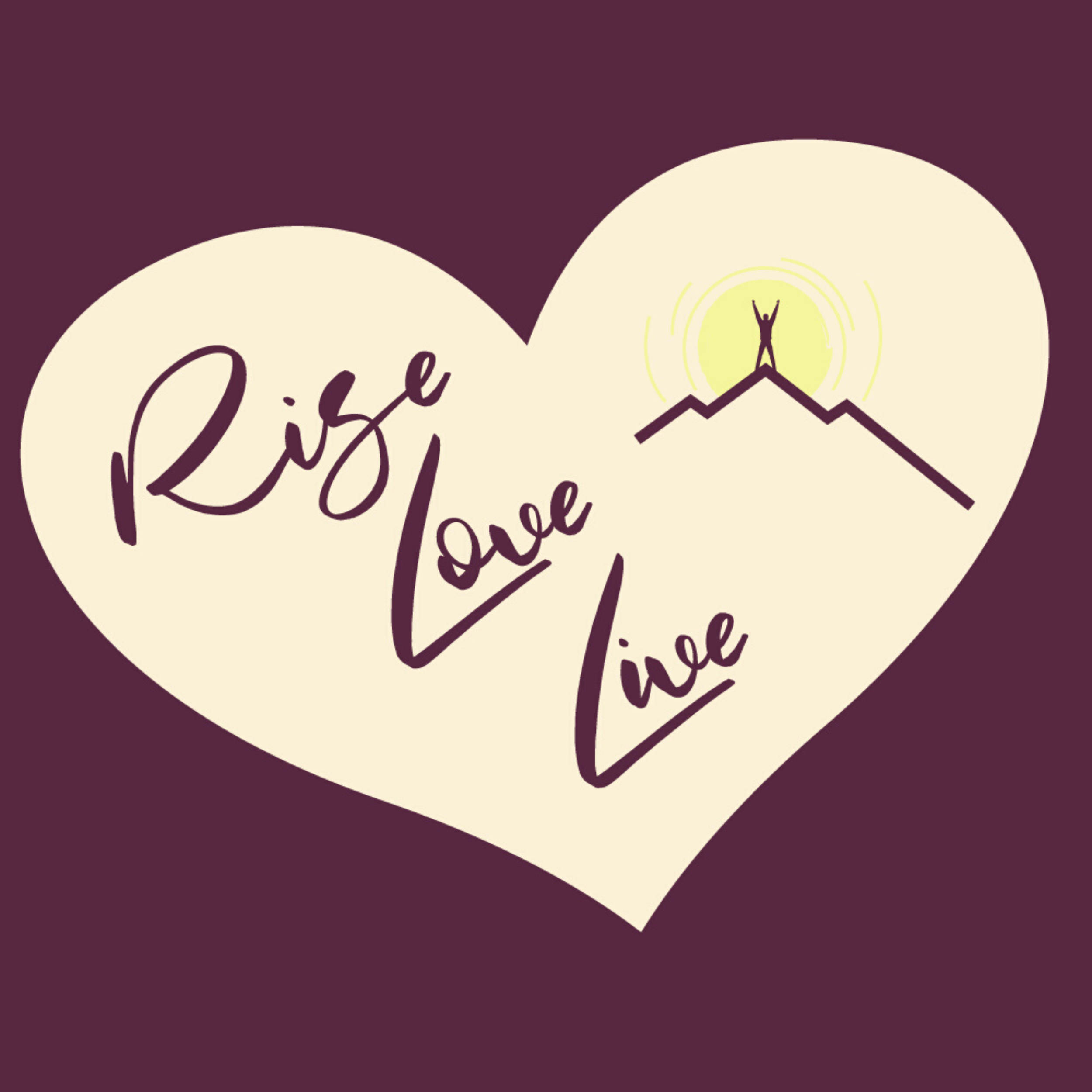


One thought on “Power of Thought – Let’s grasp this ability together, shall we?”
Comments are closed.